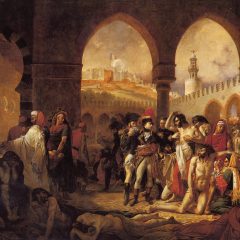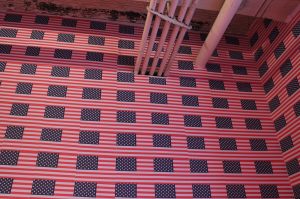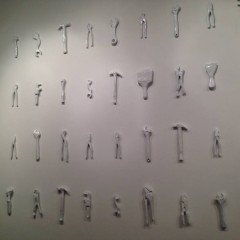(Sam reviews Lewis Colburn’s recently-closed show at Napoleon gallery, with work that raises issues about the role of the artist in society.)
The works of Lewis Colburn defy easy categorization, but they are generally concerned with storytelling and conceptions of history and truth; and Colburn seems to see art as a playful way to stimulate viewers’ imaginations. His latest installation, The Noble Amateur, presses deceptions on the viewer, such as man-made works that mimic natural growth, and hand-made pieces that resemble found objects, but noticing these tricks is part of the fun. The artist recently joined the member gallery, Napoleon, and this month the gallery hosted The Noble Amateur, which closed Oct. 20. The installation felt tailored to Napoleon’s gallery space itself — mini-works with large imaginative appeal for a mini-gallery with large aspirations.
Historical journey into the Enlightenment
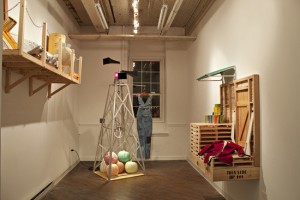
The Noble Amateur presents viewers with a historical and imaginative journey — from one perspective, it could be a view into the world of an 18th-century British gentleman living in the colony of Pennsylvania, juxtaposed with the hardscrabble life of a nearby pumpkin farmer. It could also be a playhouse full of props and sets for a child’s performance.
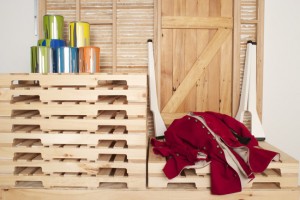
Each of the three segments of the installation was conceived separately, according to Colburn, but the three blend together into one attitude, atmosphere and idea. “Centennial (American Still Life)”(above) looks like the inside of a fort where a soldier/artist (represented only by a jacket draped on the piece) has been stationed with toy guns and several buckets of paint.
A farming reference with a hint of the tinkerer
![Enlightenment man - Lewis Colburn’s The Noble Amateur at Napoleon 3 [nobleamateur3] "Untitled (Bachelor Farmer Signal Tower)", aluminum, pine, denim, cast urethane, steel and electrical components](https://www.theartblog.org/wp-content/uploaded/rsz_nobleamateur3-200x300.jpg)
An unfinished finished piece
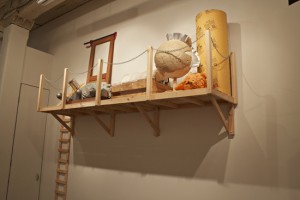
The third component, “The Loft (A Year’s Unfinished Thoughts),” is filled with leftover items from Colburn’s studio that speak to the other two pieces in this installation. While the visibility of these objects is somewhat obstructed by their placement up high on the wall, the objects look like works in progress, including an unfinished moon and more molded vegetables.
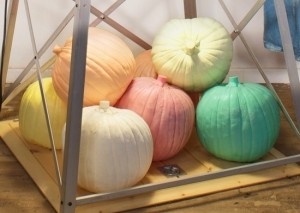
What ties everything together in The Noble Amateur is the shelf of “unfinished thoughts,” the exposed look into the random objects that have beauty for the potential imaginative journeys they only hint at. This loft is both a surrender by Colburn of the privacy that surrounds his studio practice, and a bold declaration that this nominally “unfinished” loft, which is partly obscured in its presentation, is actually a finished piece of work.
As Darcy van Buskirk wrote in her exhibition essay on this show, Colburn’s concept of a “noble amateur” is drawn from the Enlightment-era term for aristocratic individuals who relied on their education and positions of personal wealth to devote intense effort to scientific inquiry. Colburn’s use of the figure of “The Noble Amateur” could be a dig at contemporary artists who resemble these aristocrats, or it could be a more personal expression of his own mixed feelings about artistic labors. Perhaps, as “Centennial (American Still Life)” seems to suggest, Colburn sees the artist as a soldier barricaded from the outside world, with only the tools of the trade to defend himself.
“The Noble Amateur” was up at Napoleon from Oct. 4 to Oct. 20. Click here to read the exhibition essay by Darcy Van Buskirk.


